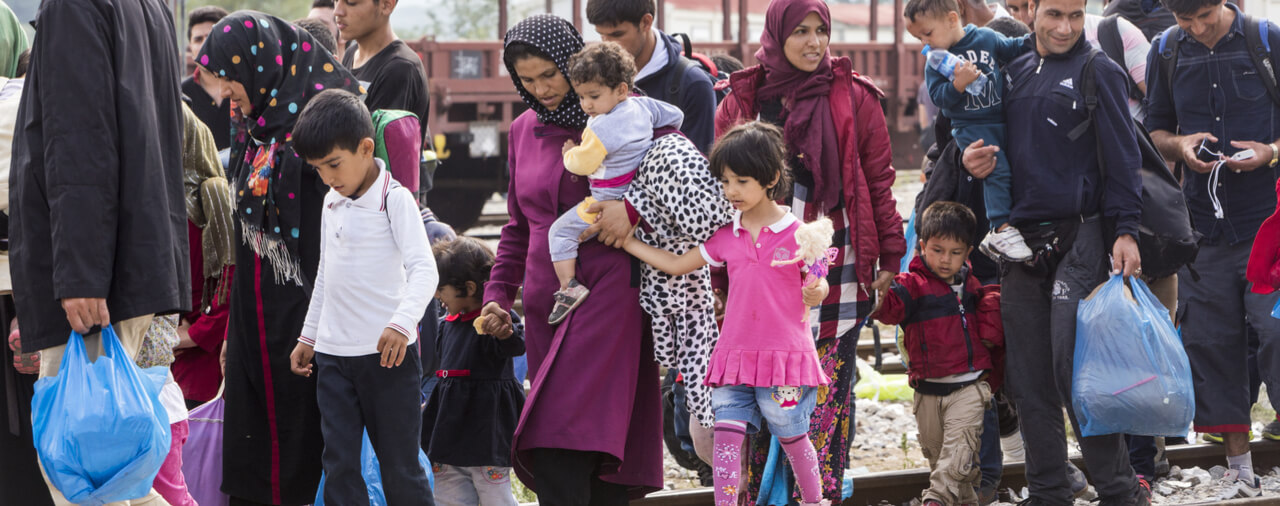Introduction
On September 27, 2017, President Donald Trump set the annual refugee admissions cap for fiscal year (FY) 2018 at 45,000. This represents the lowest refugee admissions cap in several decades. We discuss the Presidential Memorandum advising the Secretary of State of the refugee admissions cap determination in a separate article [see article].
In this blog, I will examine two interesting reports about the deliberations on the refugee admissions caps. As always, it is important to remember that reports on internal White House deliberations should always be taken with a grain of salt. While the information may be sound, if we have learned anything over the past few months, it is that there are many competing agendas not only within the White House, but within the various Executive Branch departments and agencies. In this article, we will rely upon an Axios report by Jonathan Swan titled “Trump expected to dramatically lower refugee intake” [link]1 and a New York Times report by Julie Herschfeld Davis and Miriam Jordan titled “Trump Plans 45,000 Limit on Refugees Admitted to U.S” [link].2 As the titles indicate, both reports were published just before President Trump’s formal determination.
Trump Administration Deliberations on Refugee Admissions Cap
Both reports suggest that there was disagreement within the Trump Administration on where the refugee admissions cap should be set for FY 2018.
According to both reports, the U.S. Department of State (DOS) initially pushed for a higher refugee admissions cap. The Times added that the Defense Department, the Joint Chiefs of Staff, and members of the United States mission to the United Nations also pushed for a higher refugee admissions cap of at least 50,000. Both articles suggested that many officials within the DOS saw a higher refugee admissions cap as crucial to the United States’ foreign policy interests.
However, according to both articles, Secretary of State Rex Tillerson ultimately recommended that the refugee admissions cap be set at 45,000. As we now know, President Trump would ultimately adopt Secretary Tillerson’s recommendation, which was higher than proposals from some other officials. It appears from both reports that Secretary Tillerson had initially favored a higher number before ultimately recommending a lower number that President Trump would be inclined to accept. However, Axios quoted “[a] source close to Tillerson” as saying that he had come to the conclusion that others in the Trump Administration were correct in determining that they could help more people by investing in refugee resettlement near Iraq and Syria.
Both reports indicate that the Department of Homeland Security had recommended a slightly lower number than Secretary Tillerson, with the Times reporting a 40,000 figure. Axios reported that DHS is looking to shift resources from refugee resettlement to processing an ever-growing backlog of asylum applications.
Both Axios and the Times reported that White House policy advisor Stephen Miller had advocated for the lowest refugee cap. Axios reported that Miller had recommended a cap of only 20,000 refugees. The Times reported that Miller had recommended as low as 15,000. According to the Times alone, Miller was backed by the former Secretary of Homeland Security and current White House Chief of Staff John F. Kelly in supporting the refugee admissions cap of 15,000. The Times reported that Miller and Kelly had pushed for the dramatically lower cap due to concerns about cost and safety. If the report is accurate, the Chief of Staff’s backing of Miller’s position will be worth watching going forward. Although Kelly no longer helms DHS, his position as Chief of Staff puts him at the center of all White House policy deliberations. Furthermore, he is reportedly playing a leading role in the search for his permanent replacement at DHS. The positions that Kelly advocates on immigration issues may have a significant effect on immigration policy so long as he is a senior official in the White House.
Conclusion
The reporting on the internal deliberations regarding the refugee admissions cap provides an interesting look into different factions within the Trump Administration on the issue. With the impending expiration of the Executive Order 13780 restrictions on refugees and the possibility of new vetting measures, the coming months promise to be eventful for the refugee policies of the United States. We will update the site with more information on all issues related to refugees as it becomes available.





